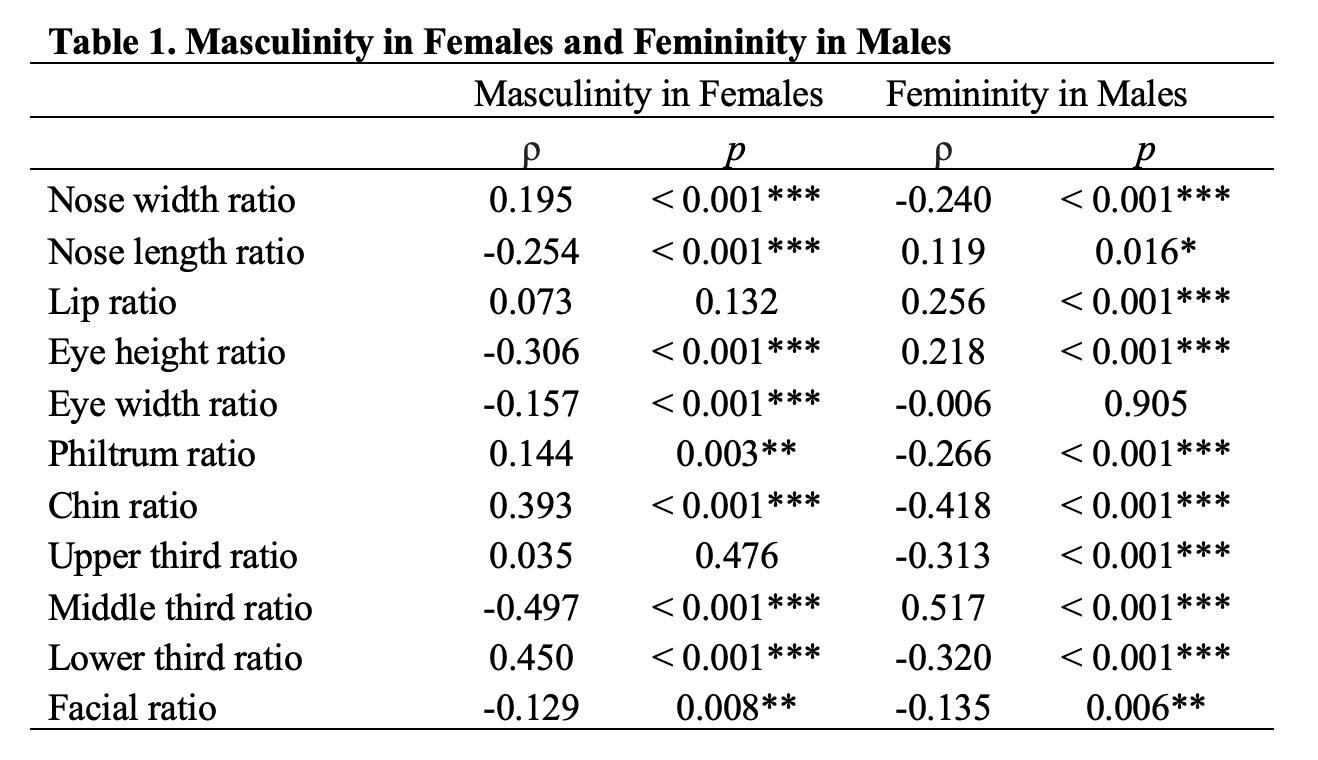Associations of Masculinity-Femininity, Facial Ratios, Attractiveness, and Sex: An Analysis of 597 Individuals
Dillan F Villavisanis1, Jessica D Blum1, Daniel Y Cho1, Jordan W Swanson1, Scott P Bartlett1, Jesse A Taylor1
1Division of Plastic & Reconstructive Surgery, Children's Hospital of Philadelphia, Philadelphia, PA, USA
Background: Males and females have known differences in anatomic facial features, including increased chin and jaw protuberance in males and vermillion lip exposure in females. Using a large set human photos and raters, this study hypothesized 1) certain anatomic facial ratios are associated with perceptions of masculinity and femininity; 2) these associations may persist when evaluating masculinity in females and femininity in males; and 3) interactions of these anatomic facial ratios can predict sex and perceptions of masculinity-femininity.
Methods: Five hundred and ninety-seven individuals were included from the Chicago Face Database, a publicly available domain of anatomic facial measurements and metrics by 1,087 raters on social characteristics. Ratings of masculinity-femininity and binary sex (male or female) data were compared to facial anatomic indices. Indices were used to characterize facial feature relativity, where higher ratio scores indicated relatively more facial feature representation. Additional indices included nasal length, eye height, eye width, forehead, lip, and chin.
Results: In the total cohort, Spearmanís correlations revealed femininity was associated with nasal length index (p = 0.219, p < 0.001), lip index (p = 0.131, p < 0.001), and eye height (p = 0.357, p <0.001) and width (p = 0.202, p < 0.001) indices, while masculinity was associated with nasal width index (p = 0.175, p < 0.001) and chin index (p = 0.234, p < 0.001). Among males alone (n = 290), femininity was associated with increased nasal length (p = 0.236, p < 0.001) and eye height (p = 0.277, p = < 0.001), and among females alone (n = 307), masculinity was associated with nasal width index (p = 0.132, p = 0.021). Linear regression models revealed interactions between attractiveness and eye height index predicted femininity (p = 0.216, SE = 0.088, z = 0.693, p = 0.014). Logistic regression models revealed increased nasal width and chin indices interact to predict male sex (p = 0.013, SE = 0.005, p = 0.008), while nose length and lip indices interact to predict female sex (p = -0.018, SE = 0.008, p = 0.020).
Conclusions: This study demonstrates significant associations of certain facial ratios with ratings of masculinity and femininity using a large dataset of human photographs. Some of these associations persist in relation to masculinity in females and femininity in males. Additionally, these facial ratios interact to predict male and female sex, which could have implications for facial feminization/masculinization.
Back to 2022 Abstracts

